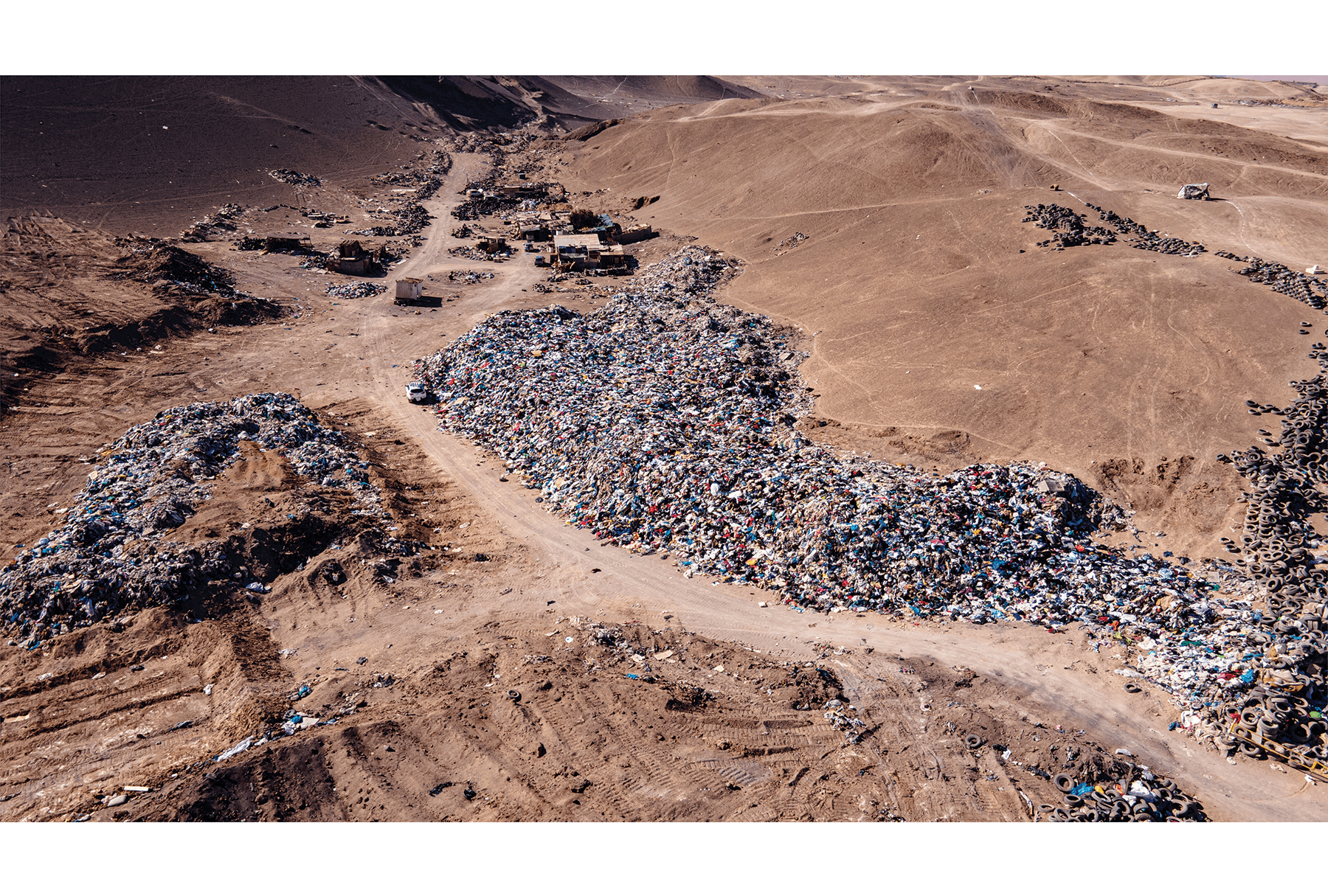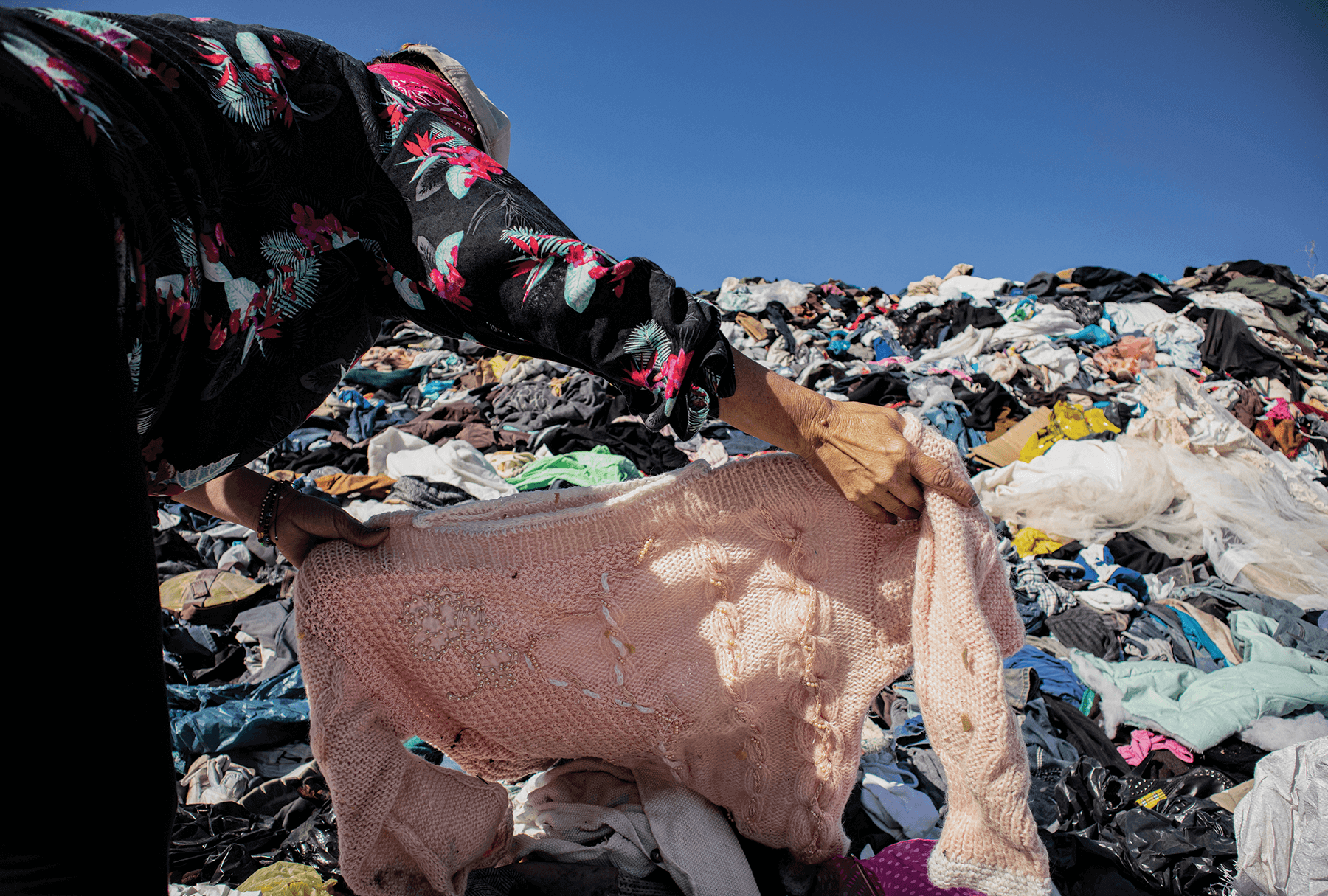Share As A Gift
Share a paywall-free link to this article.
This feature is only available for subscribers.
Start your subscription for as low as $4.95. Already a subscriber?

Photo illustration by Nico Ortega
IN THE CHRISTIAN tradition, the desert serves as the rugged backdrop against which biblical figures and mystical successors encounter God and the ungodly. The desert is a place to grapple with fear, temptation, and self-understanding. From the patriarchs to the Desert Mothers to Christ, the desert is a place of great consequence.
Moses’ numinous encounter with the burning bush in the desert directs him from bewilderment toward understanding his mission for God’s chosen people. David’s time in the desert, spurred by the threats of Saul, inspires him to write poetry and prose to articulate his deep desire for God. Jesus, too, journeyed into the desert in preparation for his public ministry. For 40 days, he fasted and endured temptation from the devil—equipping him well for the trials he would later face.
The Christian tradition continues to uphold the desert as a place of encounter and renewal. For example, the Eastern Orthodox tradition reveres the spiritual endurance of St. Anthony who battled demons in the desert for decades, scorning intimidation while asserting his devotion to Christ. His trials and time in the desert granted him apatheia, a Greek word that loosely translates to “emotional equilibrium.” For many believers today, these stories provide inspiration in navigating one’s own deserts, whether literal or metaphorical.
I find the desert portrait useful when confronting the disturbing forces that persist throughout the world. Though they may not resemble the spirits tormenting Christ and the church’s saintly successors, we might be so bold as to call them demons. The demon that has caught my eye in recent months lingers near; it nestles carefully against our skin. We think that the clothes we wear are ours to don, wash, and discard—that they take a tidy journey from drawer to donation bin. In reality, they often land in piles of clothing cast-offs in the Atacama Desert in South America. Thousands of miles away, these monstrous mountains of our own making are growing in number in the driest non-polar desert on Earth.
IN NOVEMBER 2021, Al Jazeera published an article exposing an environmental problem plaguing Chile: excess clothing waste. The country receives a whopping 59,000 tons of clothing from Europe, Asia, and the United States every year.
The garments begin their journey through Latin America at the Port of Iquique, which sits in a free trade zone of northern Chile. From here, they can take three paths: Some clothes may be bought by merchants from Santiago, the country’s capital. Others will likely be intercepted by smugglers who will distribute the clothes to other countries in Latin America. The third path is bleak: Garments that cannot be sold, whether due to prior wear or damage sustained before or during transport, are dumped in the Atacama Desert.

Discarded clothing sits in a landfill in Chile's Atacama Desert. / Antonio Cossio / Getty Images
To make sense of Chile’s clothing dumping problem, I contacted Beatriz O’Brien, a Chilean sociologist based in Santiago. When I first spoke with O’Brien about Atacama, she sighed deeply. What we in North America were just now seeing, she had witnessed in-person five to six years earlier. Even then, she said, the waste was staggering. “You feel anguish,” she said. “How did this [clothing] get here?”
I share her sorrow. For the last eight years, I have studied the humanitarian and environmental impacts of the global garment industry. I’ve combed through reports, testimonies, and photos documenting the tangible harms done by industry excesses. While reading reports on Atacama, I struggled to reconcile the images of discarded garments occupying space meant for the desert flora and fauna and, as Christian history notes, spiritual inspiration.
Juxtaposed against the arid backdrop of Chile’s largest desert, the mounds are intrudingly garish, scattered like confetti—a rainbow panoply of environmental ruin growing by 39,000 tons each year, according to Al Jazeera. And no one is coming to clean them up.
Because the clothes reside in a free trade zone, a designated area where foreign goods can be moved without paying taxes and duties, there’s little incentive for local government to resolve the waste accumulation or pay out of pocket for tariffs to clear the existing waste. So there the clothes sit. Economically disenfranchised residents of North Chile and neighboring countries travel to the dumps to find garments suitable for their families to wear or for resale in their communities, risking exposure to toxins and pollution caused by the piles. Items that are not retrieved remain splayed across the desert floor, left to rot.
Many of the clothes were treated with chemicals at the time of production or are synthetic, made of polyester and other plastic fabrics. As they degrade, toxins seep into the ground, contaminating soil and injuring surrounding animal and plant life. The process is agonizingly slow, O’Brien reminds me, as many of these garments will take hundreds of years to break down, and there is limited data on the long-term environmental impacts to the region. And, as O’Brien notes, those who have tried to take samples have faced intimidation by smugglers.
Though our discussion was rich with systemic analysis, O’Brien doesn’t shy away from sharing the sensorial gravity of her encounter with Atacama. In surveying the desert and its fabric fragments, she sensed an energy that was, in her words, “not good.” Perhaps this sensation, this energy, was simply a manifestation of the vices wrought on the desert ground, from environmental abuse to smuggling to illegal activities. Perhaps the sheer gravity of the waste before her—and now, before us—was overwhelming in itself. But what forces are embedded in the rotten, burnt, ruined cast-offs of our closets?
IN 2019, THE Vatican’s Synod on the Amazon urged believers to understand “acts and habits of pollution and destruction of environmental harmony” as “ecological sin.” We would be right to interpret the waste that accumulates in Atacama as sin. Yet there is still more than meets the eye. When I indulge in shopping excursions and purchase clothes that I don’t need (but certainly want), I sense something more behind that want—something persistent, pushing me toward unbridled accumulation, fueling and endorsing my temptation to buy with abandon.
It is here that I find helpful the image of the demonic. At first blush, it might seem inappropriate to frame clothing waste—something so banal, so ubiquitous to many North American households—as demonic. Yet how could we not regard such widespread waste, which denigrates the handiwork of oft-underpaid garment workers, degrades the natural environment, wreaks ecological harm on vulnerable ecosystems and vulnerable people, and hides the hyper-consumptive vices of the materialistic West from view, as ungodly?
The demon of clothing waste materializes most shockingly in the clothing mounds of Atacama. It is embedded deep in the soil. Yet this demon also lurks in every overstuffed closet. It lingers in the filled-to-the-brim donation bags of well-meaning believers who march their excesses to the nearest Goodwill drop-off site, whispering assurances that “a poor child somewhere will wear the stained T-shirt, too-big or too-small pants, and battered sneakers.” But these assurances are lies, manufactured by corporations, endorsed by churches, and reinforced by colonialist attachments to white-savior narratives and impersonal acts of charity. And the rotten fruits of these lies are hellish for the world’s most vulnerable.

A woman searches through a mountain of used clothes. / Antonio Cossio / Getty Images
When we face the demon of clothing waste, we face a great shame personally and systemically. The demon of clothing waste forces us to confront the vicious afterlife of our sartorial cast-offs. In doing so, the demon exposes the rot underlying our systems of consumption and production. Vox reports that the global garment industry produces between 80 billion and 150 billion garments a year; nearly three-fifths of these garments are incinerated or discarded in landfills within a few years of being made. Despite this baffling waste, clothing corporations continue to impose massive production quotas, forcing burdened workers to churn out stock that ultimately goes to waste.
WE MAY BE tempted to despair after considering the expansive waste in the Atacama and in other areas of the world that haven’t caught the radar of mainstream media. It appears that our deserts—literal and spiritual—burst at the seams with vice and strife. Yet we must remember that these deserts house more than devastation. O’Brien spoke affectionately of the flora and fauna indigenous to the Atacama. Though it’s one of the driest deserts in the world, and the driest in Latin America, the desert supports numerous creatures, from ferns to Andean condors. These critters bespeak creative joy, reminding us of how the desert is a holy space of generative encounter.
The heralded figures of Christianity remind us of this truth. It is in the desert that God spoke to Abraham, urged Moses to guide the Israelites out of slavery which birthed the revelations of Mount Sinai, rejuvenated Elijah at the point of death, and sustained John the Baptist during his ascetic residence in the wilderness. We ought to consider the steadfast words of John the Baptist who, when asked who he was, turned to the words of the prophet Isaiah, saying, “I am the voice of one crying out in the wilderness, ‘Make straight the way of the Lord’” (John 1:23). I envision God’s call reverberating through the waste-laden Atacama Desert. This call decries the results of our collective and corporate greed. But it also urges the hearer toward the promise of salvation, posing the challenge to “make straight the way of the Lord.” In the face of thousands of tons of rotting garments, how can we even begin to prepare this way, to atone, and to make things right and just?
We might start by approaching Atacama as a spiritual crossroads. Shall we be tempted once more by the demon of conspicuous consumption, of fast fashion, of disregard for laborers’ handiwork? Shall we choose the path of indulgence and detached disposal, while disregarding the harm inflicted on God’s green Earth? Or shall we heed the desert cry, scorn the demon of clothing waste, and turn toward more just ends?
Latin American innovators have already heeded this cry. Ecocitex converts textile waste into upcycled products. EcoFibra Chile transforms textile waste into insulation panels. Both companies are addressing clothing waste through creative action. We can be inspired by their work to be more innovative with our excesses and take seriously the call to reduce, reuse, and repair our wardrobe.
Interpreting Atacama as a tangible, spiritual desert, plagued by the demon of clothing waste, proves generative for believers. Atacama exposes the spiritual relevance of clothing waste, laying bare our disordered desire, haywire appetites, and our multitude of sins—environmental, interpersonal, and transnational. The problem of clothing waste, highlighted by Atacama, exists not only as a concern for ethicists, environmentalists, and sociologists, but also for theologians. Here, the desert and demon awaken us to the spiritual rot made manifest in clothing cast-offs, bursting wardrobes, crowded garment factories, and choked Earth. From here, we can see how clothes—and how we purchase, care for, and discard them—deserve theological attention.
The portrait of the demon and the desert hastens our response to God’s call, guiding us toward renewed action. Repenting from the systems in which we are ensnared, and regarding them as they are—demonic and in disrepair—frees us to live differently, to pursue accountability in personal endeavors and structural participation. Facing the demon compels us to consider the resonant call of God weaving through the deserts of our lives.
The creatures persisting throughout Atacama despite the demon of clothing waste make manifest the enduring joy of created life and encourage us to live, act, and even consume anew, for the sake of these lives—and for our own. My hope is you can be moved by Atacama to act in ways that eschew the temptations of conspicuous consumption, secure justice for the communities burdened by our clothing waste, and replenish the Earth with rich soil devoid of discarded dresses.

Got something to say about what you're reading? We value your feedback!